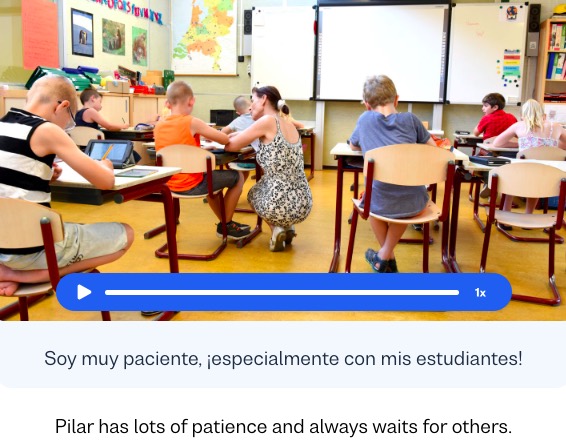Understanding Adverbs in Spanish
Adverbs can modify verbs, adjectives and even other adverbs. Learn how and why with this guide.
I want to learn...
When communicating in Spanish, there are a few things you need to consider, from the tense you’re speaking in to the mood you’re trying to convey. One of the things you’ll have to take into account as you become more adept at a language are adverbs.
Adverbs provide additional information about verbs, adjectives, and even other adverbs. By modifying or describing the action, manner, time, place, frequency, or degree of an activity, adverbs can make a sentence more understandable and detailed.
After reading this article, you’ll have a grasp of what adverbs do, how they work and why and when you should use them. Let’s dig deeper into the Spanish adverbs functions and types.
How Spanish adverbs work
Generally, adverbs answer questions such as how, when, where, to what extent, and how often. By answering these questions, they help provide a clearer picture of the action or state being described.
There are six types of adverbs that change sentences in different ways. They may modify verbs, adjectives or other adverbs depending on the situation.
Types of Adverbs in Spanish
1. Manner
These adverbs describe how an action is performed. They often end in -mente, which is added to the feminine form of an adjective. For example, rápidamente (quickly), cuidadosamente (carefully), fácilmente (easily).
Note: When forming these adverbs, notice how the accent stays in the same place. This is true for all adverbs with a -mente ending.
2. Time
These adverbs define when or how often an action occurs. For example: ayer (yesterday), ahora (now), siempre (always).
3. Place
They describe where an action takes place. Like: aquí (here), allí (there), abajo (down)
4. Frequency
These types of adverbs label how often an action occurs. For example: nunca (never), siempre (always), a menudo (often).
5. Quantity
They refer to the intensity or amount of an action or quality. Examples: muy (very), bastante (quite), demasiado (too).
6. Affirmation
These express affirmation and agreement. For example: seguramente (surely), ciertamente (certainly).
7. Negation
These adverbs express denial. Examples: Nunca and jamás (both different levels of never), and no (not).
8. Doubt
These are used to express hesitation. Examples include: Tal vez (maybe), quizás (perhaps), probablemente (probably).
How to Use Spanish Adverbs in Sentences
The rules explaned above apply to most adverbs in Spanish. There are some other characteristics of adverbs that you should be aware of before using them in sentences.
By definition, adverbs are invariable, meaning they stay the same no matter the gender and number of the rest of the sentence. E.g., “un trabajo completamente difícil" (a completely difficult job), or “unas chicas completamente felices” (completely happy girls).
Additionally, some adjectives can function as adverbs without any changes in their form:
-
Él habla claro. (He speaks clearly.)
-
Camina lento. (He walks slowly.)
Finally, adverbs usually come after the verb they modify. However, there are some exceptions and variations in word order depending on the type and placement of the adverb within the sentence. For example:
-
Claramente, no sabe hablar. (He clearly doesn’t know how to speak.)
-
No sabe hablar claramente. (He doesn’t know how to speak clearly.)
Adverbs are a crucial part of Spanish grammar; they enhance the precision and clarity of sentences by providing additional information about actions, states, and qualities.
By understanding the different types of adverbs, their forms, and any exceptions, you can effectively express yourself in Spanish.
Remembering the rules, practicing their usage and paying attention to exceptions will contribute to mastering the art of using adverbs with confidence both orally and in writing.
Ready to get your Spanish into tip-top shape?
Busuu is home to the world’s largest language-learning community.
Click below to start learning Spanish – or one of the other 13 languages we offer – for free today!!

